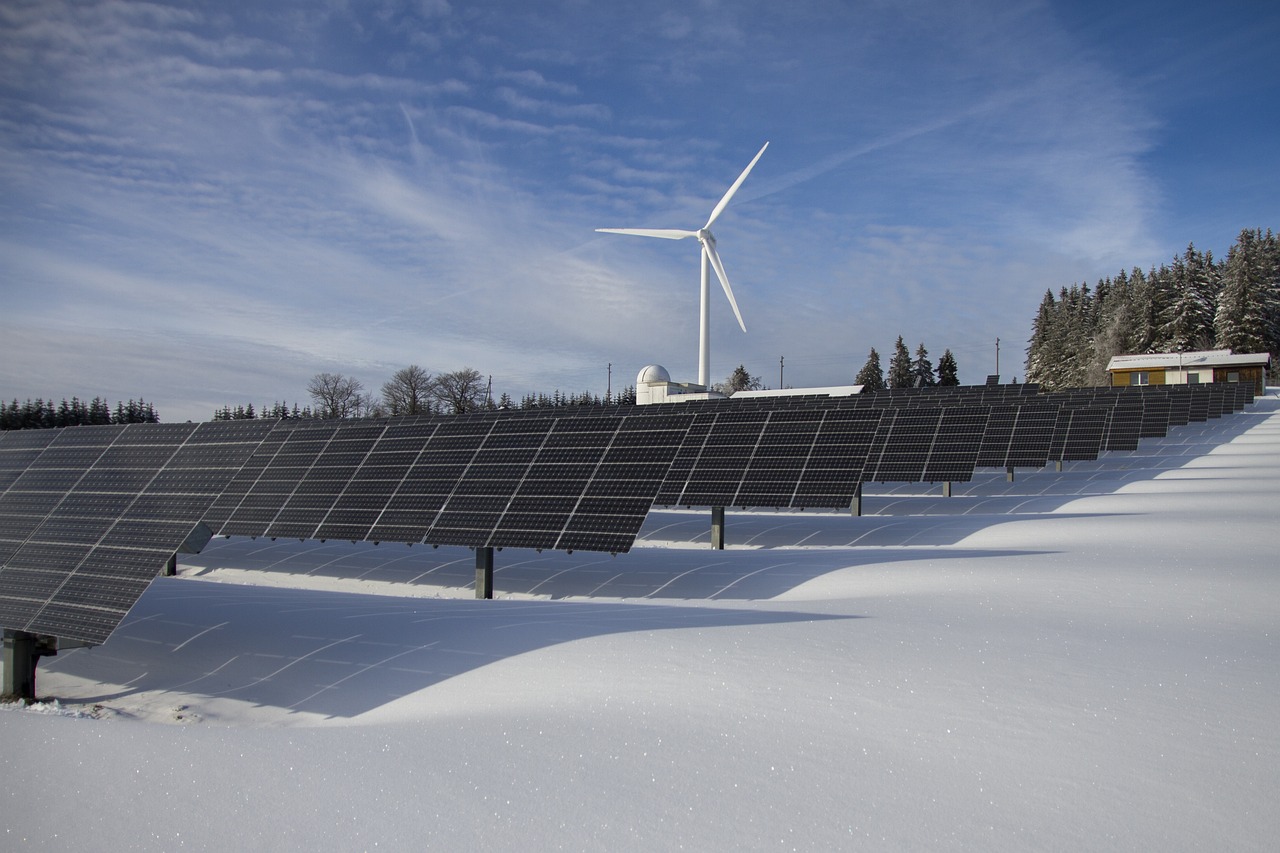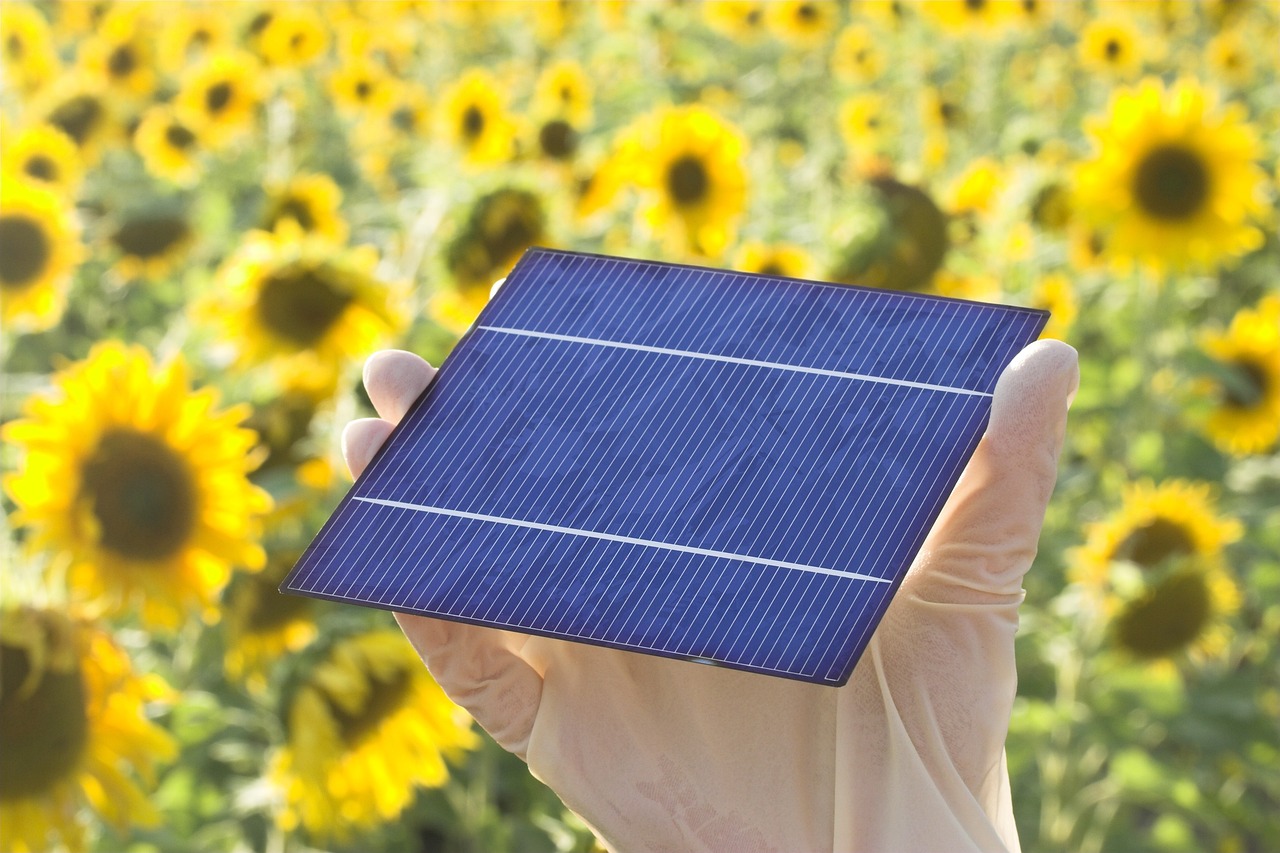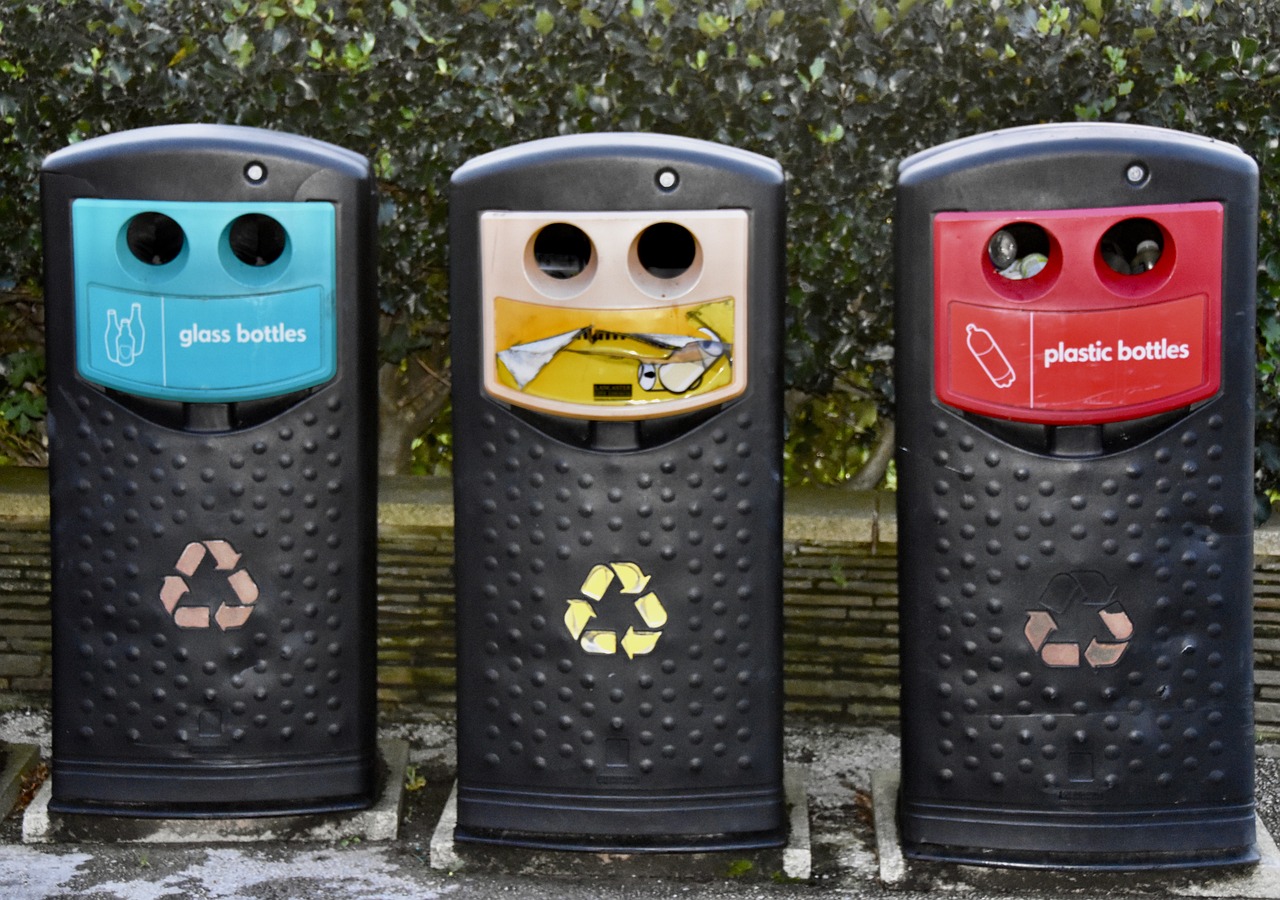How to Reduce Your Carbon Footprint at Home
In today's world, the urgency to tackle climate change has never been more pressing. Every small step we take can contribute to a healthier planet. By reducing your carbon footprint at home, you not only save money but also play a significant role in combating global warming. This article explores practical steps and strategies that can help you minimize your carbon emissions within your household, contributing to a sustainable future. So, are you ready to make a difference? Let’s dive into the ways you can start today!
Your carbon footprint is essentially the total amount of greenhouse gases, particularly carbon dioxide, that your household emits directly or indirectly. This includes emissions from energy consumption, transportation, and even the food you eat. Understanding the components of your carbon footprint is crucial for identifying areas where you can make impactful changes. For instance, did you know that your energy usage accounts for a significant portion of your carbon emissions? By being aware of these factors, you can take targeted steps to reduce your impact on the environment.
Improving energy efficiency in your home can significantly lower your carbon emissions. It’s like giving your home a green makeover without the need for drastic renovations. Simple upgrades and habits can lead to substantial energy savings and reduced environmental impact. Think about it: when you use less energy, you not only lower your bills but also decrease the demand for energy production, which is often reliant on fossil fuels. Here are some effective strategies to enhance your home's energy efficiency:
Investing in energy-efficient appliances can drastically cut down your household energy consumption. Products that are Energy Star-rated are designed to use less energy while still providing the same level of performance. For example, a new refrigerator or washing machine can save you hundreds of dollars over its lifetime in energy costs, while also reducing your carbon footprint. Not only are you doing your wallet a favor, but you're also making a positive impact on the environment.
Implementing smart home devices can optimize energy use in ways you never thought possible. Smart thermostats, for example, learn your schedule and adjust the temperature accordingly, ensuring that you're not heating or cooling an empty house. Similarly, smart lighting systems can turn off lights when rooms are unoccupied. By monitoring and controlling your energy consumption effectively, you can see a significant reduction in your carbon footprint.
Proper insulation and sealing are crucial for preventing energy loss in your home. Think of your house as a cozy blanket; if there are holes or thin spots, you’ll lose warmth in winter and cool air in summer. Ensuring that your home’s thermal envelope is intact will not only enhance energy efficiency but also improve your comfort. This means checking for drafts around windows and doors and considering insulation upgrades in your attic or walls.
Transitioning to renewable energy sources, such as solar or wind, can greatly reduce your carbon footprint. Imagine harnessing the power of the sun to run your household! Exploring the options available for homeowners, such as solar panels or community wind projects, can lead to substantial long-term savings and a cleaner energy source. Not only do these options reduce your reliance on fossil fuels, but they also increase your home’s value.
Water usage contributes to your overall carbon footprint, often in ways we might not realize. When you conserve water, you're also reducing the energy required for heating and treating that water. There are effective strategies for conserving water in your home that can lead to both environmental and financial benefits. For instance, did you know that fixing leaks can save gallons of water every day? It’s a simple yet impactful way to start.
Installing low-flow faucets and showerheads can significantly reduce water usage without sacrificing performance. These fixtures are designed to minimize water flow while still providing a satisfying experience. Making this switch can lead to both water and energy savings, as less hot water means less energy used for heating. It's a win-win!
Implementing rainwater harvesting systems can provide an alternative water source for irrigation and other non-potable uses. This method not only conserves water but also reduces the strain on municipal water systems. By collecting rainwater in barrels, you can use it to water your garden or wash your car, making your home more sustainable.
Transportation is a major contributor to carbon emissions, but changing your commuting habits can lower your carbon footprint and promote a more sustainable lifestyle. Consider alternatives to driving alone, such as public transportation, biking, or even walking. Each of these options can significantly reduce your carbon emissions and improve your health.
Utilizing public transportation or carpooling can significantly reduce individual carbon emissions. Sharing rides or taking the bus not only saves money but also decreases traffic congestion and pollution. Imagine the impact if more people opted for these options instead of driving solo every day!
Switching to electric or hybrid vehicles can minimize your transportation-related emissions. These vehicles are designed to be more energy-efficient and produce fewer emissions than traditional gasoline-powered cars. Plus, many regions offer incentives for electric vehicle owners, making it an attractive option for eco-conscious drivers.
Reducing waste is essential for lowering your carbon footprint. The less waste you produce, the less energy is required for disposal and recycling. Explore various strategies for minimizing waste in your home and promoting a circular economy. For example, think about how much packaging comes with your groceries. By opting for bulk items or bringing your own containers, you can significantly cut down on waste.
Composting is an effective way to manage organic waste while enriching your garden. Instead of sending food scraps to the landfill, you can turn them into nutrient-rich compost that benefits your plants. It’s a simple process that not only reduces waste but also enhances your gardening efforts.
Implementing recycling and reusing practices can divert waste from landfills. Understand how to effectively recycle materials and repurpose items to reduce your overall waste footprint. For instance, instead of tossing out old clothes, consider donating them or turning them into cleaning rags. Every small action counts!
Q: What is a carbon footprint?
A: A carbon footprint is the total amount of greenhouse gases emitted directly or indirectly by an individual or household, typically measured in carbon dioxide equivalents.
Q: How can I measure my carbon footprint?
A: There are various online calculators that can help you estimate your carbon footprint based on your energy use, transportation habits, and lifestyle choices.
Q: Are energy-efficient appliances worth the investment?
A: Yes! While they may have a higher upfront cost, energy-efficient appliances can lead to significant savings on your utility bills over time and reduce your carbon emissions.
Q: What are some easy ways to conserve water at home?
A: Simple changes like fixing leaks, installing low-flow fixtures, and using rainwater for irrigation can help conserve water effectively.
Q: How can I get started with composting?
A: Start by designating a space in your yard or using a compost bin. Add kitchen scraps, yard waste, and turn the pile regularly to help it decompose.

Understanding Your Carbon Footprint
Have you ever stopped to think about the impact your daily activities have on our planet? Your carbon footprint is essentially a measure of the total greenhouse gases you produce, directly and indirectly, through your actions. This includes everything from the energy you consume at home to the transportation you use to get around. Understanding your carbon footprint is crucial because it highlights the areas where you can make impactful changes. By reducing your footprint, you not only contribute to a healthier planet but also embrace a more sustainable lifestyle.
So, what exactly constitutes your carbon footprint? It’s made up of several components, primarily categorized into two main areas: direct emissions and indirect emissions. Direct emissions come from sources that you control, such as your car or heating system. On the other hand, indirect emissions stem from the production and transportation of goods and services you consume. For instance, when you buy a new shirt, the emissions involved in its manufacturing and shipping contribute to your overall footprint.
To break it down further, here are some key contributors to your carbon footprint:
- Home Energy Use: The electricity and gas you use for heating, cooling, and powering appliances.
- Transportation: The fuel consumed by your vehicle or the emissions from public transport.
- Food Choices: The carbon emissions associated with the production, processing, and transportation of the food you eat.
- Waste Generation: The waste you produce and how it is managed can also contribute significantly to your carbon footprint.
By understanding these elements, you can begin to identify which areas of your life have the largest impact and where you can make changes that will lead to significant reductions in your carbon emissions. For instance, if you find that transportation is a major contributor, you might consider carpooling more often or switching to a bike for short trips. Similarly, if your home energy use is high, investing in energy-efficient appliances could be a game changer.
In essence, grasping the concept of your carbon footprint empowers you to take actionable steps towards reducing it. It’s like having a personal roadmap that guides you toward a more environmentally friendly lifestyle. The journey may seem daunting at first, but remember, every small change counts. Whether it’s turning off lights when you leave a room or opting for a plant-based meal a few times a week, these choices add up over time, leading to a significant reduction in your overall carbon emissions.
In summary, understanding your carbon footprint is the first step in making informed decisions that benefit not only you but also the planet. As you embark on this journey, keep in mind that every effort counts, and together, we can make a difference.
| Question | Answer |
|---|---|
| What is a carbon footprint? | A carbon footprint measures the total greenhouse gases produced by an individual, organization, or product, expressed in equivalent tons of carbon dioxide (CO2). |
| How can I calculate my carbon footprint? | You can calculate your carbon footprint using various online calculators that take into account your energy usage, transportation habits, and waste generation. |
| Why is it important to reduce my carbon footprint? | Reducing your carbon footprint helps mitigate climate change, promotes sustainability, and can lead to cost savings in your energy bills. |

Energy Efficiency in the Home
When it comes to reducing your carbon footprint, one of the most impactful areas to focus on is energy efficiency in your home. By making a few simple changes, you can significantly lower your energy consumption, which not only helps the environment but also saves you money on your utility bills. Imagine your home as a leaky bucket; if you can patch those leaks, you’ll hold onto more water—just like you can hold onto more energy by improving your home’s efficiency.
One of the first steps to enhancing energy efficiency is to upgrade your appliances. Older appliances can be energy hogs, consuming more electricity than newer, energy-efficient models. Investing in Energy Star-rated products can drastically reduce your household energy consumption. For instance, Energy Star refrigerators use about 15% less energy than standard models, which can lead to significant savings over time. Not only are you helping the planet, but you’re also making a smart financial decision.
Have you ever considered how smart home technology can play a role in energy efficiency? Devices like smart thermostats and lighting systems can optimize your energy use. For example, a smart thermostat learns your habits and adjusts the temperature when you're not home, which can reduce energy waste. Imagine coming home to a perfectly heated or cooled house without having to run your HVAC system constantly. This not only enhances comfort but also reduces your energy bill.
Another crucial aspect of energy efficiency involves insulation and sealing. Think of your home as a cozy blanket; if there are holes or thin spots, you’ll lose warmth in the winter and cool air in the summer. Proper insulation keeps your home’s thermal envelope intact, preventing energy loss. Sealing gaps around windows and doors can also make a huge difference. According to the U.S. Department of Energy, sealing and insulating your home can save you up to 20% on heating and cooling costs.
Transitioning to renewable energy sources is another powerful way to enhance your home’s energy efficiency. Solar panels, for instance, allow you to harness the sun’s energy, reducing your reliance on fossil fuels. Not only do they lower your carbon footprint, but they can also lead to significant savings on your energy bill over time. While the initial investment may seem daunting, many homeowners find that the long-term benefits far outweigh the costs.
To summarize, improving energy efficiency in your home is a multifaceted approach that can yield substantial benefits. By upgrading appliances, embracing smart technology, ensuring proper insulation, and considering renewable energy, you can make a significant impact on your carbon footprint while also enjoying a more comfortable and cost-effective living environment.
Q: What are some quick ways to improve energy efficiency in my home?
A: Start by switching to LED light bulbs, unplugging devices when not in use, and using power strips to easily turn off multiple devices at once. Additionally, consider setting your thermostat a few degrees lower in winter and higher in summer.
Q: How much can I save by upgrading to energy-efficient appliances?
A: While savings vary by appliance and usage, many households report savings of 10-50% on their energy bills after upgrading to Energy Star-rated appliances.
Q: Is it worth investing in smart home technology?
A: Yes! Smart home technology can lead to significant energy savings by optimizing your energy use based on your habits, which often results in lower utility bills over time.

Upgrading Appliances
Upgrading your appliances is one of the most effective ways to reduce your carbon footprint without sacrificing comfort. Think about it: our homes are filled with devices that consume energy, and some of them are downright energy hogs! By swapping out these old relics for energy-efficient appliances, you can make a significant impact on your household's energy consumption. Not only do these new appliances help the environment, but they also save you money in the long run. It's like hitting two birds with one stone!
When you invest in appliances that have the Energy Star label, you're choosing products that meet strict energy efficiency guidelines set by the U.S. Environmental Protection Agency. These products are designed to use less energy while providing the same level of performance. For instance, an Energy Star-rated refrigerator can use up to 50% less energy than standard models. Imagine the savings on your utility bill!
In addition to refrigerators, consider upgrading other appliances such as washing machines, dishwashers, and ovens. These appliances are often used daily, and their cumulative energy consumption can be staggering. By making the switch to energy-efficient models, you not only cut down on your carbon emissions but also enhance your home’s overall efficiency.
To give you a clearer picture, let's compare the energy consumption of traditional appliances versus their energy-efficient counterparts. Here’s a simple table:
| Appliance Type | Traditional Model Energy Consumption (kWh/year) | Energy Star Model Energy Consumption (kWh/year) | Energy Savings (%) |
|---|---|---|---|
| Refrigerator | 800 | 400 | 50% |
| Washing Machine | 600 | 350 | 42% |
| Dishwasher | 300 | 240 | 20% |
| Oven | 500 | 300 | 40% |
As you can see from the table, the energy savings can be substantial. But the benefits don’t stop there! Many energy-efficient appliances come with advanced features that improve usability and performance. For example, modern washing machines often have settings that optimize water usage based on the load size, while energy-efficient dishwashers have sensors that adjust the wash cycle to save both water and energy.
Now, you might be wondering, “What about the upfront cost?” It’s true that energy-efficient appliances can have a higher initial price tag, but think of it as an investment in your future. The savings on your energy bills will quickly add up, often offsetting the higher purchase price within a few years. Plus, many energy-efficient appliances come with warranties that can further protect your investment.
In conclusion, upgrading to energy-efficient appliances is a smart choice for anyone looking to reduce their carbon footprint. It’s a win-win situation where you contribute to a healthier planet while enjoying lower utility bills. So, why not take that step today? Your wallet and the Earth will thank you!
- What is an Energy Star appliance?
Energy Star appliances are certified by the U.S. Environmental Protection Agency for their energy efficiency. They consume less energy than standard models, helping to reduce your carbon footprint.
- Are energy-efficient appliances more expensive?
While they may have a higher upfront cost, energy-efficient appliances typically save you money on your energy bills over time, making them a cost-effective choice in the long run.
- How can I find out if an appliance is energy-efficient?
Look for the Energy Star label or check the appliance's energy guide label, which provides information on its energy consumption and efficiency.

Smart Home Technology
In today's fast-paced world, is revolutionizing the way we manage our households, making it easier than ever to control energy consumption and reduce our carbon footprint. Imagine being able to adjust the temperature of your home or turn off lights from your smartphone, all while sipping your morning coffee. Sounds convenient, right? This convenience comes with a significant environmental benefit. By optimizing energy use, smart home devices not only save you money but also contribute to a healthier planet.
One of the most notable innovations in smart home technology is the smart thermostat. Unlike traditional thermostats, which require manual adjustments, smart thermostats learn your schedule and preferences. They can automatically adjust the temperature when you're away, ensuring that energy isn't wasted heating or cooling an empty house. Some popular models even provide real-time energy usage reports, helping you make informed decisions about your energy consumption. For instance, the Nest Learning Thermostat and Ecobee SmartThermostat are excellent choices, offering features like remote access and integration with other smart home devices.
Another game-changer in the realm of smart home technology is smart lighting systems. These systems allow you to control your lights remotely, set schedules, and even adjust brightness levels according to your needs. By switching to LED smart bulbs, you not only save energy but also extend the lifespan of your lighting fixtures. Imagine coming home to a well-lit space without having to leave the lights on all day. Popular brands like Philips Hue and LIFX offer customizable lighting options that can create the perfect ambiance while keeping your energy usage in check.
Moreover, integrating smart plugs into your home can lead to significant energy savings. These devices let you control any appliance plugged into them, allowing you to turn off devices that consume energy in standby mode, often referred to as "phantom loads." For example, by using a smart plug for your entertainment system, you can ensure that it’s completely powered down when not in use, saving you a few extra bucks on your energy bill each month.
However, the benefits of smart home technology extend beyond just energy savings. They also enhance the overall comfort and convenience of your living space. Imagine being able to set the perfect temperature and lighting for movie night, all with a simple voice command or a tap on your phone. This seamless integration of technology into everyday life not only makes your home more enjoyable but also encourages sustainable habits.
In conclusion, embracing smart home technology is a practical step towards reducing your carbon footprint. By investing in devices like smart thermostats, lighting systems, and plugs, you can take control of your energy consumption while enjoying the convenience of modern living. As you consider these upgrades, remember that every small change can lead to a significant impact on the environment. So why not start today?
- What is smart home technology? Smart home technology refers to devices and systems that allow homeowners to remotely control and automate household functions, such as lighting, heating, and security.
- How can smart home technology help reduce my carbon footprint? By optimizing energy use through automation and remote control, smart home technology can help you avoid wasting energy, thereby reducing your overall carbon emissions.
- Are smart home devices expensive? While the initial investment can be higher than traditional devices, the long-term savings on energy bills often outweigh the costs.
- Do I need a special setup for smart home devices? Most smart home devices are designed to be user-friendly and can be set up through a smartphone app, requiring minimal technical knowledge.

Insulation and Sealing
When it comes to reducing your carbon footprint, one of the most effective yet often overlooked strategies is . Imagine your home as a cozy blanket; if there are holes or thin spots, that warmth escapes, and you end up using more energy to keep it comfortable. By ensuring your home is well-insulated and properly sealed, you can maintain a stable indoor temperature, which translates into lower energy consumption and reduced carbon emissions.
Insulation works by slowing down the transfer of heat between the inside of your home and the outside environment. This means that during the winter months, your home stays warm without cranking up the thermostat, and in the summer, it remains cool without blasting the air conditioning. The benefits of proper insulation are twofold: not only do you save money on energy bills, but you also contribute to a healthier planet by using less energy.
Sealing, on the other hand, is about closing up any gaps or leaks that allow air to escape or enter your home. These leaks can be found around windows, doors, and even in your attic. According to the U.S. Department of Energy, sealing air leaks can improve your home's energy efficiency by up to 20%. Think of it like patching up a leaky boat; if you don’t fix those leaks, you’ll end up taking on water and sinking your energy savings.
To get started, here are some common areas where you might need to focus your insulation and sealing efforts:
- Attic: This is often the largest source of heat loss. Adding insulation here can make a significant difference.
- Walls: Insulating exterior walls can help keep your home comfortable year-round.
- Windows and Doors: Weather stripping and caulking can prevent drafts and improve overall efficiency.
- Basement and Crawl Spaces: Insulating these areas can reduce heating costs and prevent moisture problems.
As you consider insulation and sealing, you might wonder about the types of materials available. Common insulation materials include fiberglass, foam board, and spray foam, each with its own pros and cons. For sealing, caulking and weather stripping are widely used, but investing in high-quality products can yield better long-term results.
In conclusion, taking the time to improve your home's insulation and sealing can lead to substantial energy savings and a significant reduction in your carbon footprint. Not only will you enjoy a more comfortable living environment, but you'll also be making a positive impact on the planet. So, why wait? Start your journey towards a more energy-efficient home today!
1. How can I tell if my home needs more insulation?
If your energy bills are higher than expected, your home feels drafty, or you notice temperature fluctuations in different rooms, it may be time to check your insulation.
2. What is the best type of insulation for my home?
The best type of insulation depends on your specific needs and the areas you are insulating. Fiberglass is popular for attics, while spray foam is excellent for sealing gaps and providing high R-values.
3. Can I install insulation myself?
While some insulation types can be DIY projects, others, like spray foam, may require professional installation. Always follow safety guidelines and manufacturer instructions.
4. How often should I check my insulation?
It's a good idea to check your insulation every few years or whenever you notice changes in your home's energy efficiency.

Renewable Energy Sources
Transitioning to is a game-changer when it comes to reducing your carbon footprint at home. Imagine harnessing the power of the sun or the wind to fuel your daily activities! Not only does this shift contribute to a healthier planet, but it can also lead to significant savings on your energy bills. So, what are the options available for homeowners looking to make this switch?
One of the most popular choices is solar energy. By installing solar panels on your roof, you can capture sunlight and convert it into electricity. This not only reduces your reliance on fossil fuels but also lowers your monthly energy costs. In fact, many homeowners report saving thousands of dollars over the lifespan of their solar systems. Plus, with various incentives and tax credits available, the initial investment can be more manageable than you think!
Another exciting option is wind energy. If you live in a location with consistent wind patterns, small wind turbines can be an excellent addition to your home. These turbines can generate enough electricity to power your home, and in some cases, even allow you to sell excess energy back to the grid. Imagine the thrill of knowing that the energy powering your home is generated right from your backyard!
Let’s not forget about geothermal energy. This technology uses the earth’s natural heat to provide heating and cooling for your home. By installing a geothermal heat pump, you can significantly reduce your energy consumption and enjoy a comfortable living environment year-round. Although the upfront costs can be higher, the long-term savings and environmental benefits are worth considering.
To give you a clearer picture of the benefits of these renewable energy sources, here’s a quick comparison:
| Energy Source | Benefits | Considerations |
|---|---|---|
| Solar Energy | Reduces electricity bills, low maintenance, tax incentives | Initial installation cost, requires sunlight |
| Wind Energy | Generates clean energy, potential income from excess energy | Requires wind, space for turbine installation |
| Geothermal Energy | Efficient heating/cooling, low operating costs | High initial cost, site-specific feasibility |
By exploring these renewable energy options, you not only contribute to a sustainable future but also inspire others in your community to follow suit. The transition might seem daunting at first, but remember, every small step counts. Are you ready to embrace the power of renewable energy in your home?
Q: How much can I save by switching to renewable energy?
A: Savings vary depending on the energy source and your location, but many homeowners report significant reductions in their energy bills. Additionally, government incentives can help offset installation costs.
Q: Is my home suitable for solar panels or wind turbines?
A: Most homes can accommodate solar panels, but wind energy depends on local wind patterns and space availability. Consulting with a professional can help you determine the best option for your property.
Q: What are the maintenance requirements for renewable energy systems?
A: Generally, solar panels require minimal maintenance, while wind turbines may need occasional checks. Geothermal systems also have low maintenance needs, making them convenient options for homeowners.

Water Conservation Techniques
Water is an invaluable resource, and conserving it plays a crucial role in reducing your overall carbon footprint. Not only does saving water help the environment, but it also lowers your utility bills—talk about a win-win! By adopting a few simple techniques, you can make a significant impact on both your household and the planet. So, how can you get started? Let’s dive into some practical strategies that can lead to effective water conservation.
One of the easiest ways to conserve water is by upgrading to efficient fixtures. Installing low-flow faucets and showerheads can drastically reduce your water usage without sacrificing performance. For instance, traditional showerheads can use up to 5 gallons of water per minute, while low-flow models can cut that down to 2 gallons or less. This means that every time you take a shower, you’re not just saving water; you’re also saving energy that would otherwise be used to heat that water. It’s like turning your daily routine into a sustainable practice!
But wait, there’s more! Have you ever considered rainwater harvesting? This technique allows you to collect and store rainwater for various uses, such as irrigation or washing your car. Imagine a system where you can capture the rain that falls on your roof and use it to nourish your garden or clean your outdoor spaces. Not only does this reduce your dependence on municipal water systems, but it also helps mitigate stormwater runoff, which can pollute local waterways. Implementing a rainwater harvesting system can be as simple as placing a barrel under your downspouts. Just think of the savings and the positive impact you’re making!
To give you a clearer picture, here’s a quick comparison of water usage between traditional and efficient fixtures:
| Fixture Type | Water Usage (gallons per minute) | Annual Water Usage (for 10-minute shower, 3 times a week) |
|---|---|---|
| Traditional Showerhead | 5 | 780 |
| Low-Flow Showerhead | 2 | 312 |
As we wrap up this section, remember that every drop counts! By being mindful of your water usage and implementing these conservation techniques, you can contribute to a more sustainable future. Plus, it’s a fantastic way to set an example for your family and friends. So, are you ready to take the plunge into water conservation?
- Why is water conservation important? Water conservation is crucial for preserving our natural resources, reducing energy consumption, and ensuring a sustainable future for generations to come.
- How much water can I save by using low-flow fixtures? Switching to low-flow fixtures can save hundreds of gallons of water per year, significantly reducing your household's water usage.
- Is rainwater harvesting legal? Yes, in many places, rainwater harvesting is legal and encouraged as a sustainable practice. However, it’s essential to check local regulations.

Efficient Fixtures
When it comes to reducing your carbon footprint at home, play a crucial role. You might be surprised to learn that simple changes in your bathroom and kitchen can lead to significant water and energy savings. By replacing traditional fixtures with low-flow alternatives, you not only conserve water but also reduce the energy required to heat that water. This dual benefit is something that every environmentally-conscious homeowner should consider.
For instance, installing low-flow faucets and showerheads can cut your water usage by up to 50%. Imagine taking a refreshing shower while knowing you’re using half the water you normally would! These fixtures are designed to maintain water pressure while limiting the flow, ensuring you don’t sacrifice comfort for sustainability. Moreover, they often come with easy installation options, making it a DIY project that anyone can tackle.
Let’s take a closer look at some efficient fixtures that can help you save water:
| Fixture Type | Water Savings | Energy Savings |
|---|---|---|
| Low-Flow Showerhead | Up to 40% less water | Reduces heating costs |
| Low-Flow Faucet Aerator | Up to 30% less water | Less energy for heating |
| Dual-Flush Toilet | Up to 67% less water per flush | Minimized energy for wastewater treatment |
In addition to these fixtures, consider integrating smart technology into your water usage. Smart faucets can provide real-time feedback on water usage, helping you become more aware of your consumption patterns. This awareness can lead to more conscious choices, such as turning off the tap while brushing your teeth or taking shorter showers.
Furthermore, outdoor water fixtures like drip irrigation systems can significantly reduce water waste in your garden. Unlike traditional sprinklers that often oversaturate areas, drip irrigation delivers water directly to the roots of your plants, ensuring they receive just the right amount without excess runoff. This not only conserves water but also promotes healthier plant growth.
In conclusion, upgrading to efficient fixtures is not just about saving money on your water bill; it's about making a conscious effort to protect our planet. Each small change contributes to a larger impact. So, are you ready to make the switch and embrace a lifestyle that’s both sustainable and smart?
- What are low-flow fixtures? Low-flow fixtures are plumbing devices designed to use less water than standard fixtures without compromising performance.
- How much can I save by installing efficient fixtures? You can save up to 50% on your water bill, depending on the fixtures you replace.
- Are low-flow fixtures difficult to install? Most low-flow fixtures are designed for easy installation and can typically be installed without professional help.
- Do low-flow fixtures affect water pressure? No, low-flow fixtures are designed to maintain water pressure while reducing flow, so you won’t notice a difference in performance.

Rainwater Harvesting
Rainwater harvesting is not just a trendy buzzword; it's a practical and sustainable solution that can transform how we manage water in our homes. Imagine capturing the very essence of nature—rainwater—and using it to nourish your garden, flush your toilets, or even wash your car. By implementing a rainwater harvesting system, you can significantly reduce your reliance on municipal water supplies and lower your overall carbon footprint.
So, how does this work? Essentially, rainwater is collected from surfaces like roofs and directed into storage tanks through a system of gutters and downspouts. This collected water is then filtered and stored for various uses. The benefits are numerous, including:
- Conservation of Water: By utilizing rainwater, you can significantly decrease your household's demand for treated water, which is often energy-intensive to produce.
- Cost Savings: Lowering your water bill is a delightful perk! The more rainwater you use, the less you pay for municipal water.
- Environmental Benefits: Reducing runoff helps prevent water pollution and erosion, contributing to a healthier ecosystem.
To get started with rainwater harvesting, consider the following components:
| Component | Description |
|---|---|
| Catchment Area | The surface (like your roof) that collects rainwater. |
| Gutters and Downspouts | Channels that direct water from the catchment area to storage. |
| Storage Tank | A container where harvested rainwater is stored for later use. |
| Filtration System | Removes debris and contaminants from the rainwater before use. |
Installing a rainwater harvesting system may seem daunting, but the rewards are worth it. Whether you opt for a simple barrel setup or a more complex underground tank, the key is to ensure that your system is designed to meet your specific needs. Plus, many local governments offer incentives or rebates to encourage homeowners to adopt sustainable practices like this.
In a world where every drop counts, rainwater harvesting stands out as a beacon of hope. It empowers you to take control of your water usage, promotes sustainability, and can even enhance your landscape's beauty. So, why not embrace this eco-friendly practice and make a positive impact on both your wallet and the planet?
1. Is rainwater safe to drink?
While rainwater can be collected for potable use, it requires proper filtration and treatment. Always check local regulations regarding rainwater harvesting for drinking purposes.
2. How much rainwater can I collect?
The amount of rainwater you can collect depends on the size of your catchment area and the average rainfall in your region. A larger roof can capture more water, especially during heavy rains.
3. Do I need a permit for rainwater harvesting?
In some areas, a permit may be required for larger systems. It's best to check with your local government to understand any regulations or guidelines.
4. What maintenance is required for a rainwater harvesting system?
Regular maintenance includes cleaning gutters, inspecting filters, and checking the storage tank for debris. This ensures the system operates efficiently and safely.

Sustainable Transportation Options
Transportation is one of the biggest culprits when it comes to carbon emissions. It’s like that friend who always shows up uninvited to a party, taking more than they give. But the good news is, you can change your travel habits to make a positive impact on the environment. By exploring sustainable transportation options, you not only contribute to reducing your carbon footprint but also embrace a lifestyle that’s healthier for both you and the planet.
So, what are some of these sustainable transportation options? Let’s dive into a few that can help you cut down those emissions while also saving you some cash in the long run. First off, think about public transport. It’s like a community of people traveling together, reducing the number of individual cars on the road. Buses, trams, and trains are designed to carry many passengers at once, which means fewer vehicles and less congestion. Plus, public transport is often more affordable than maintaining a personal vehicle. Imagine the savings on gas and parking!
Another great option is carpooling. This is where you can team up with friends, family, or colleagues to share rides. Not only does this reduce the number of vehicles on the road, but it also makes your commute more enjoyable. You can catch up on life, share stories, or even listen to a podcast together. It’s a win-win situation! And if you’re feeling adventurous, consider biking or walking for shorter trips. It’s not just good for the environment; it’s also a great way to get some exercise and fresh air. Think of it as a two-for-one deal: you’re saving the planet and your waistline!
Now, let’s talk about electric and hybrid vehicles. These beauties are like the superheroes of the automotive world. Electric vehicles (EVs) run on electricity, which means they produce zero tailpipe emissions. On the other hand, hybrid vehicles combine a traditional gasoline engine with an electric motor, offering better fuel efficiency than standard cars. The transition to these vehicles is becoming easier, with more charging stations popping up and manufacturers producing a wider range of models. If you’re in the market for a new car, consider making the leap to one of these eco-friendly options. They might have a higher upfront cost, but think about the savings on fuel and maintenance over time!
In summary, sustainable transportation isn’t just about reducing emissions; it’s about making smarter choices that can enhance your life. Whether it’s hopping on a bus, sharing a ride, biking, or choosing an electric vehicle, every little bit helps. It’s like building a puzzle—each piece matters, and together, they create a beautiful picture of a healthier planet. So, the next time you think about how to get from point A to point B, remember that your choice can make a difference!
Q: What are the benefits of using public transportation?
A: Public transportation reduces traffic congestion, lowers carbon emissions, and is often more cost-effective than owning a car. It also promotes a sense of community and can be a more relaxing way to travel.
Q: How can I find carpooling options?
A: There are various apps and websites that can connect you with others looking to share rides. Additionally, check with your workplace or local community boards for organized carpooling groups.
Q: Are electric vehicles really worth the investment?
A: Yes! While the initial cost may be higher, electric vehicles typically have lower operating costs, including fuel and maintenance. Plus, many regions offer incentives for EV buyers, which can help offset the purchase price.

Public Transport and Carpooling
When it comes to reducing your carbon footprint, public transport and carpooling are two of the most effective strategies at your disposal. Imagine this: instead of each person driving alone in their own car, taking a bus or sharing a ride can significantly decrease the number of vehicles on the road. This not only cuts down on carbon emissions but also eases traffic congestion, making your commute smoother and more enjoyable.
Public transport systems, such as buses, subways, and trams, are designed to carry numerous passengers at once, which means fewer cars are needed to transport the same number of people. In fact, studies show that using public transportation can reduce an individual's carbon footprint by 45% compared to driving alone. Moreover, public transport is often more energy-efficient, consuming less fuel per passenger mile than private vehicles. So, next time you think about hopping in your car, consider the environmental impact of your choice.
Carpooling, on the other hand, is another fantastic way to cut down on emissions. By sharing a ride with friends, family, or coworkers, you not only save on gas money but also reduce the wear and tear on your vehicle. It's like having a mini road trip every day, where you can catch up with others while doing your part for the planet. Plus, many cities offer carpool lanes that allow you to bypass traffic, getting you to your destination faster.
To illustrate the benefits of these transportation methods, consider the following table:
| Transportation Method | Carbon Emissions Reduction | Cost Savings |
|---|---|---|
| Public Transport | Up to 45% | Varies by location |
| Carpooling | Up to 30% | Shared fuel costs |
In addition to the environmental benefits, utilizing public transport and carpooling can also foster a sense of community. When you ride with others, you may meet new people or strengthen existing relationships, creating a more connected and supportive environment. Plus, many cities are investing in making public transport more accessible and user-friendly, with apps that provide real-time updates and route planning to make your journey as smooth as possible.
So, why not take the plunge? Start by researching your local public transport options or organizing a carpool with your friends or coworkers. Not only will you be contributing to a healthier planet, but you may also discover that commuting can be a lot more enjoyable than you thought. And remember, every little bit counts when it comes to reducing your carbon footprint!
- How much can I really save by using public transport? Savings vary by location and frequency of use, but many find that public transport can significantly lower their monthly transportation costs.
- Is carpooling safe? Yes, carpooling is generally safe, especially when you know your fellow passengers. Consider using trusted apps or community groups to find reliable carpool partners.
- What if public transport isn't available in my area? If public transport options are limited, look into local carpooling networks or consider forming your own group with neighbors or coworkers.

Electric and Hybrid Vehicles
Switching to electric or hybrid vehicles is one of the most impactful decisions you can make to minimize your carbon footprint. These vehicles not only reduce greenhouse gas emissions but also offer significant savings on fuel costs. Imagine driving a car that runs on electricity instead of gasoline—it's like trading in your old flip phone for the latest smartphone! The technology is evolving rapidly, making these vehicles more accessible and efficient.
Electric vehicles (EVs) run entirely on electricity, while hybrid vehicles combine a traditional internal combustion engine with an electric motor. This combination allows hybrids to achieve better fuel efficiency than conventional cars. The benefits are numerous:
- Reduced Emissions: EVs produce zero tailpipe emissions, while hybrids emit significantly less than their gasoline counterparts.
- Lower Operating Costs: With fewer moving parts, electric and hybrid vehicles typically require less maintenance.
- Incentives and Rebates: Many governments offer tax incentives and rebates for purchasing electric or hybrid vehicles, making them more affordable.
Furthermore, the shift towards electric and hybrid vehicles is supported by an expanding network of charging stations. As more people make the switch, the infrastructure continues to grow, making it easier than ever to own an electric vehicle. In fact, many cities are investing in fast-charging stations, allowing drivers to recharge their cars in a fraction of the time it used to take.
To illustrate the advantages of electric and hybrid vehicles, consider the following comparison:
| Vehicle Type | Fuel Efficiency (MPGe) | Annual Fuel Cost (Approx.) | Emissions (g CO2/mile) |
|---|---|---|---|
| Conventional Gasoline Car | 25 | $1,500 | 404 |
| Hybrid Vehicle | 50 | $750 | 200 |
| Electric Vehicle | 100 | $500 | 0 |
As you can see, the savings on fuel costs and emissions reduction are substantial. By choosing an electric or hybrid vehicle, you're not just making a personal choice; you're contributing to a larger movement towards a sustainable future. It's like planting a tree today that will grow into a lush forest tomorrow!
In conclusion, if you're looking for ways to reduce your carbon footprint, investing in an electric or hybrid vehicle is a smart and impactful choice. It's not just about saving money—it's about being part of a solution that benefits the planet. So, why not take the leap? Your wallet and the Earth will thank you!
Here are some common questions about electric and hybrid vehicles:
- Q: How long does it take to charge an electric vehicle?
A: Charging times vary depending on the charger type. A standard home charger can take 4-8 hours, while fast chargers can charge up to 80% in about 30 minutes. - Q: Are electric vehicles more expensive than gasoline cars?
A: While the initial cost may be higher, the long-term savings on fuel and maintenance often offset this difference. - Q: What happens if I run out of battery?
A: Most electric vehicles come with a reserve that allows you to reach a charging station. However, it's always good to plan your trips accordingly!

Waste Reduction Strategies
Reducing waste is not just a trend; it's a necessity for a sustainable future. Every piece of garbage we throw away contributes to our carbon footprint, impacting the environment in ways we often overlook. By adopting effective waste reduction strategies, we can make a significant difference in minimizing our ecological impact. Imagine your home as a mini-ecosystem where every action, no matter how small, contributes to a larger goal of sustainability. By being mindful of our waste, we can promote a healthier planet.
One of the most effective ways to manage waste is through composting. This process not only helps reduce the amount of organic waste that ends up in landfills but also enriches your garden soil. When you compost, you’re essentially creating a nutrient-rich environment for your plants while cutting down on the methane emissions that occur when organic waste decomposes in landfills. It’s a win-win! To start composting, you can set up a compost bin in your backyard or even use a small container in your kitchen for kitchen scraps. Common items to compost include:
- Fruit and vegetable scraps
- Coffee grounds and filters
- Eggshells
- Grass clippings and leaves
Another vital strategy is implementing recycling and reusing practices. It’s astonishing how much waste we can divert from landfills by simply being conscious of our consumption habits. Recycling not only conserves natural resources but also saves energy. For instance, recycling aluminum saves 95% of the energy required to create new aluminum from raw materials. Here’s a quick overview of how to effectively recycle common materials:
| Material | Recycling Tips |
|---|---|
| Plastic | Check for recycling symbols and rinse containers before recycling. |
| Paper | Keep it dry and free from food contamination. |
| Glass | Rinse and remove lids before placing them in the recycling bin. |
| Metal | Flatten cans to save space and ensure they are clean. |
Reusing items is equally important. Instead of throwing away old clothes, consider donating them or repurposing them into cleaning rags. Glass jars can be transformed into storage containers, and cardboard boxes can serve as organizers. The idea is to think creatively about how you can extend the life of items before discarding them. This not only reduces waste but also saves money in the long run.
Moreover, being mindful of your purchases can significantly reduce waste. Before buying something new, ask yourself if you truly need it or if you can borrow, rent, or buy second-hand. This mindset shift can drastically lower the amount of waste you generate. Remember, the best waste is the waste that is never created in the first place.
In conclusion, adopting waste reduction strategies at home is not just about recycling and composting; it's about changing our mindset towards consumption. By being proactive and conscious consumers, we can collectively reduce our carbon footprint and contribute to a more sustainable future. So, let’s take these steps together and make a positive impact on our planet!
Q: What is composting?
A: Composting is the process of recycling organic waste, like food scraps and yard waste, into a rich soil amendment that can be used to nourish plants.
Q: How can I start recycling at home?
A: Begin by setting up separate bins for different materials like paper, plastic, glass, and metal. Make sure to follow your local recycling guidelines.
Q: What are some easy ways to reduce waste?
A: You can reduce waste by composting, recycling, reusing items, and being mindful of your purchases.

Composting Organic Waste
Composting organic waste is one of the most rewarding and environmentally friendly practices you can adopt in your home. Not only does it help reduce the amount of waste sent to landfills, but it also creates a nutrient-rich soil amendment that can enhance your garden's health. Imagine turning your kitchen scraps and yard waste into black gold for your plants! It’s like giving back to the earth while simultaneously reducing your carbon footprint.
So, what exactly is composting? In simple terms, composting is the process of recycling organic material, such as food scraps and yard waste, into a valuable fertilizer. The magic happens when microorganisms break down this material into compost, a rich soil-like substance. This process can occur in a compost bin, pile, or even in a worm bin if you choose vermicomposting. The best part? You can do it right in your backyard or even in a small apartment with the right setup!
To get started, you’ll need to gather the right materials. Here’s a quick breakdown:
- Browns: These are carbon-rich materials like dried leaves, straw, and cardboard.
- Greens: These are nitrogen-rich materials such as fruit and vegetable scraps, coffee grounds, and grass clippings.
- Water: Moisture is essential to keep the composting process active.
It’s crucial to maintain a balance between browns and greens. A good rule of thumb is to aim for a ratio of about 3:1 (browns to greens). Too many greens can lead to a smelly compost pile, while too many browns can slow down the decomposition process. Remember, the goal is to create a thriving environment for those helpful microorganisms!
Once you have your materials, start layering them in your compost bin or pile. Begin with a layer of browns, add a layer of greens, and continue alternating until you reach the desired height. Don’t forget to turn your compost regularly to aerate it, which speeds up the decomposition process. In a few months, you’ll be amazed to see how your kitchen waste has transformed into rich compost that can nourish your garden!
Composting not only helps reduce waste but also minimizes methane emissions from landfills, which is a potent greenhouse gas. By composting, you’re making a significant impact on the environment. Plus, using compost in your garden can reduce the need for chemical fertilizers, which can be harmful to the ecosystem.
In conclusion, composting organic waste is a simple yet effective way to contribute to a healthier planet. Whether you have a sprawling backyard or a tiny apartment, there are composting methods available for everyone. So why not give it a try? Your plants will thank you, and you’ll feel great knowing you’re doing your part for the environment!
Q: What can I compost?
A: You can compost fruit and vegetable scraps, coffee grounds, eggshells, grass clippings, dried leaves, and small amounts of shredded paper. Avoid meat, dairy, and oily foods as they can attract pests.
Q: How long does it take to make compost?
A: The composting process can take anywhere from a few weeks to several months, depending on factors like temperature, moisture, and the materials used. Turning your compost regularly can speed up the process.
Q: Can I compost in an apartment?
A: Absolutely! You can use a worm bin or a small compost tumbler to compost in limited spaces. Many cities also offer community composting programs.
Q: What do I do with the compost once it's ready?
A: Once your compost is ready, you can use it to enrich your garden soil, as a top dressing for your plants, or even in potting mixes for container gardening.

Recycling and Reusing
Recycling and reusing are essential practices that can significantly reduce waste and lower your carbon footprint. In our modern society, where consumerism often reigns supreme, it's easy to forget the importance of these sustainable habits. But think about it: every item we throw away could potentially have a second life. By recycling and reusing, we not only conserve natural resources but also minimize the energy consumption associated with producing new products. Isn't it fascinating how a simple act can have such a profound impact on our planet?
To get started with recycling, it's crucial to understand what materials can be recycled and how to sort them properly. Most communities have guidelines for recycling, but generally, you can recycle:
- Paper and Cardboard: Newspapers, magazines, and cardboard boxes are often accepted.
- Plastics: Look for the recycling symbol; types 1 (PETE) and 2 (HDPE) are commonly recyclable.
- Metals: Aluminum cans and steel food cans can be recycled easily.
- Glass: Clear, green, and brown glass containers are typically recyclable.
Once you know what can be recycled, the next step is to implement effective recycling practices at home. Consider setting up a designated recycling station in your kitchen or garage. Use clearly labeled bins to separate materials, making it easier to dispose of items correctly. This small change can lead to a significant increase in the amount of waste you recycle rather than throw away.
But recycling isn't the only way to be eco-friendly. Reusing items is equally important. Before you toss something in the trash, ask yourself if it can be repurposed. For instance, glass jars can be transformed into storage containers, and old t-shirts can be turned into cleaning rags. The possibilities are endless! By finding new uses for items, you not only reduce waste but also save money in the long run. It's like giving your belongings a second chance at life.
Moreover, consider donating items you no longer need. Clothes, furniture, and electronics can often find new homes through local charities or thrift stores. This not only helps those in need but also keeps items out of landfills. Remember, one person's trash can be another person's treasure!
In conclusion, recycling and reusing are powerful tools in the fight against climate change. By adopting these practices, you're not just helping the environment; you're also setting an example for others to follow. So, what are you waiting for? Start looking at your waste differently and embrace the idea of giving your items a new purpose. Together, we can make a difference!
Q: What materials can I recycle?
A: Most common recyclables include paper, cardboard, plastics (check the recycling symbol), metals, and glass. Always check your local guidelines for specific rules.
Q: How can I find out if an item is recyclable?
A: Look for the recycling symbol on the item or check with your local waste management authority for guidance on recycling specific materials.
Q: Can I recycle pizza boxes?
A: It depends. If the pizza box is clean and free from grease, it can be recycled. However, heavily soiled boxes usually cannot be recycled.
Q: What are some creative ways to reuse items?
A: You can turn glass jars into storage containers, old t-shirts into cleaning rags, or use wine corks as plant markers in your garden. Be creative!
Frequently Asked Questions
- What is a carbon footprint?
A carbon footprint is the total amount of greenhouse gases, particularly carbon dioxide, that are emitted directly or indirectly by an individual, household, organization, or product. It’s measured in units of carbon dioxide equivalents (CO2e). Understanding your carbon footprint is crucial because it helps you identify how your daily activities contribute to climate change and where you can make a difference.
- How can I improve energy efficiency in my home?
Improving energy efficiency can be achieved through simple changes such as upgrading to energy-efficient appliances, using smart home technology to monitor usage, and ensuring proper insulation. For instance, switching to Energy Star-rated appliances not only reduces energy consumption but also saves you money on utility bills in the long run. Every little bit counts!
- What are some effective water conservation techniques?
To conserve water, consider installing low-flow fixtures like faucets and showerheads, which can significantly reduce water usage without sacrificing performance. Additionally, implementing rainwater harvesting systems allows you to collect and use rainwater for irrigation, helping to minimize your water footprint while benefiting your garden.
- How can I reduce my transportation-related carbon emissions?
Switching to public transportation, carpooling, or using electric or hybrid vehicles can drastically lower your transportation-related emissions. By sharing rides or opting for mass transit, you not only save on fuel costs but also contribute to less traffic congestion and lower overall emissions. It’s a win-win!
- What are some waste reduction strategies I can implement at home?
Implementing composting for organic waste is an excellent way to minimize landfill contributions while enriching your garden. Additionally, practicing recycling and reusing items can significantly reduce waste. By sorting recyclables and finding new uses for old items, you help promote a circular economy and lessen your environmental impact.



















